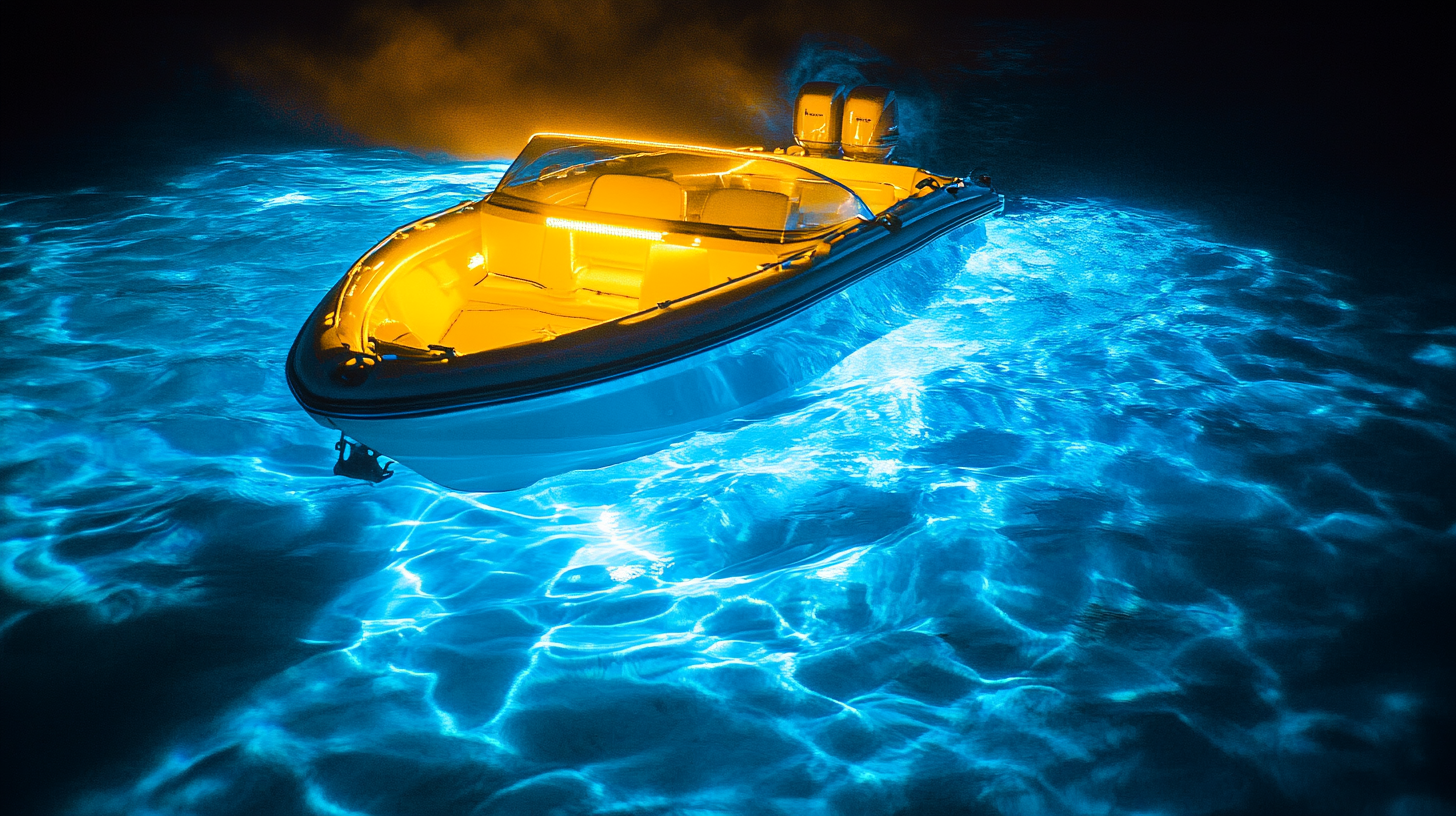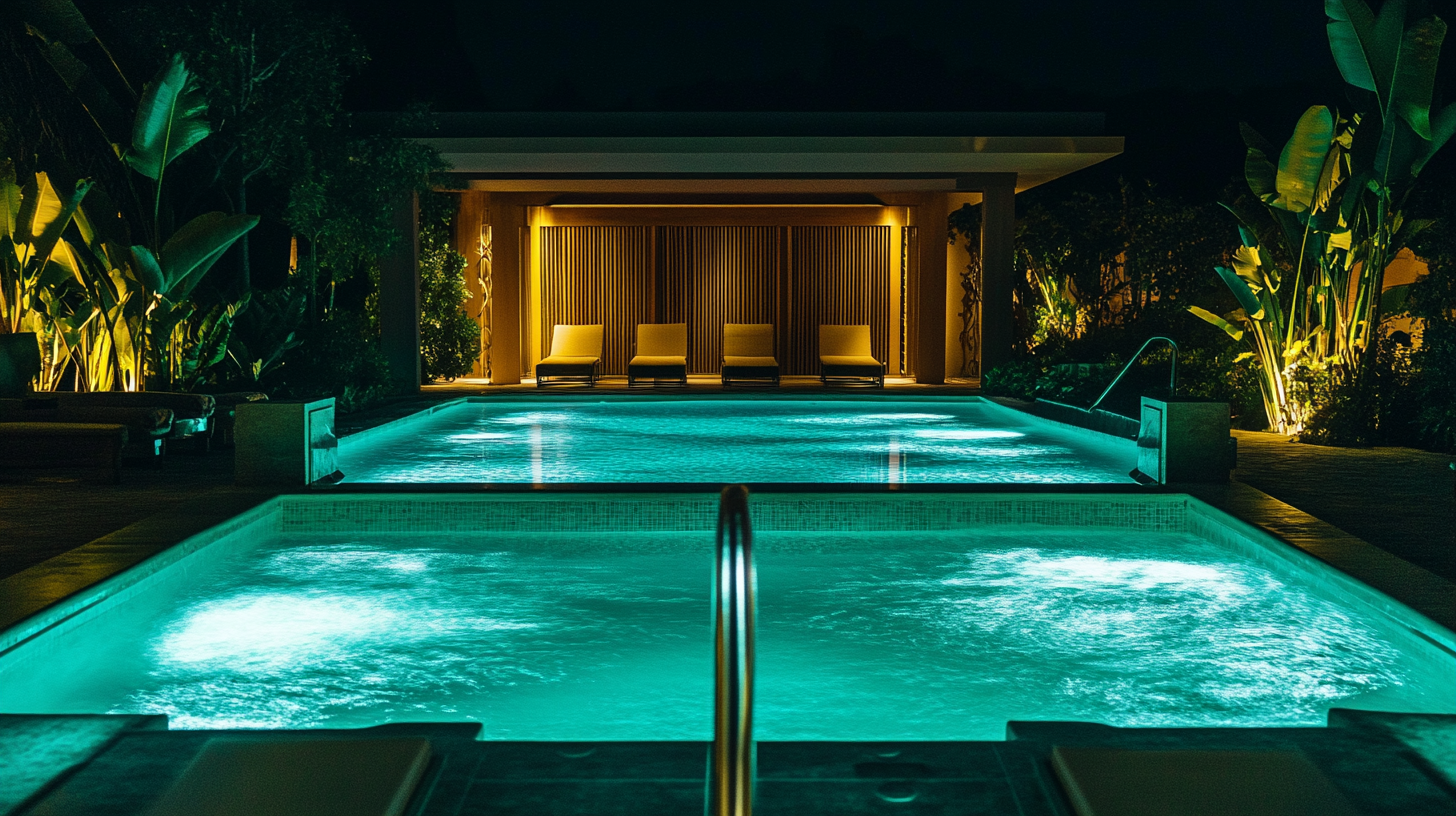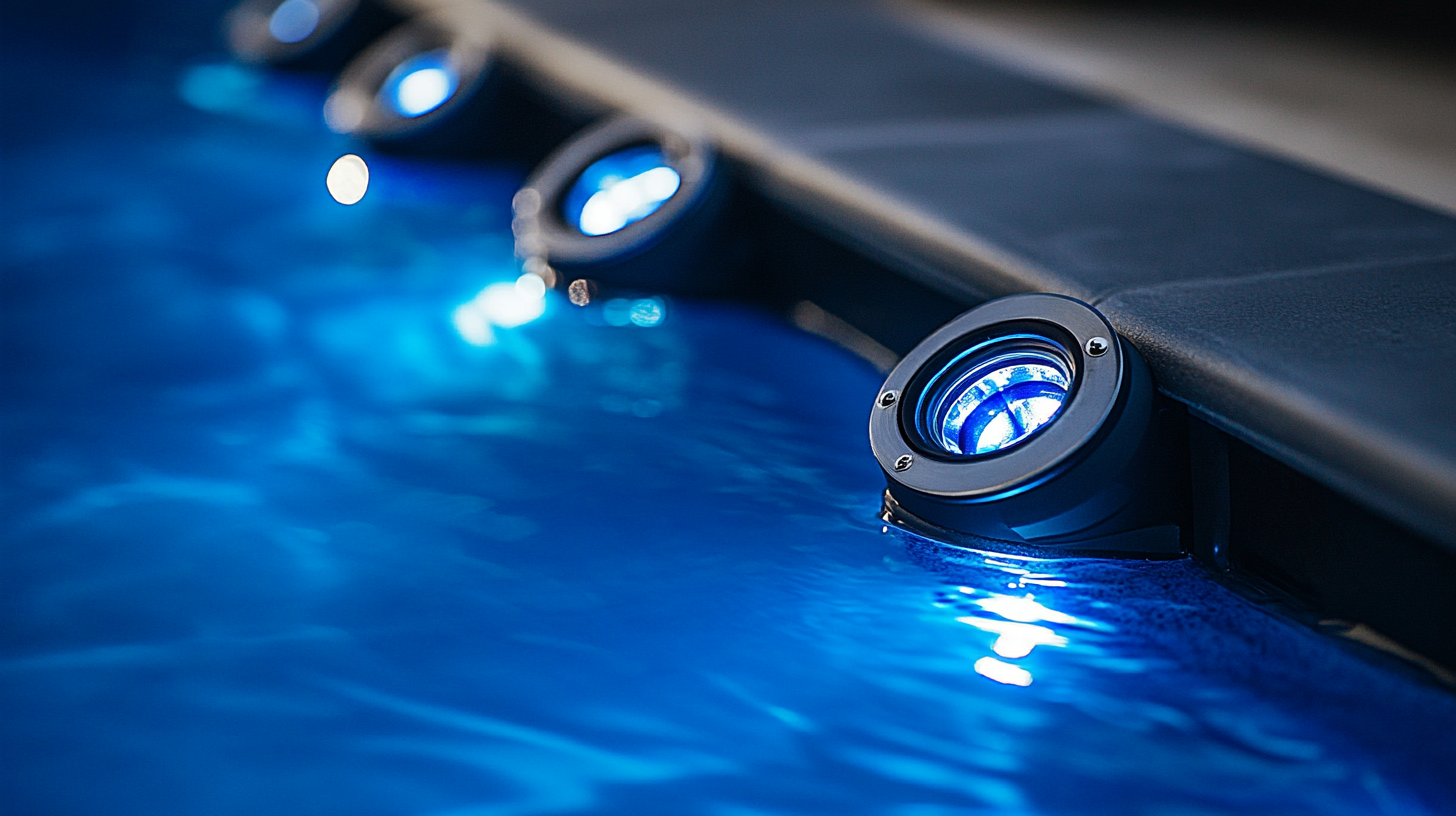Comparing energy consumption of different underwater boat lights
Underwater boat lights have become an essential accessory for boat owners who want to enhance night-time visibility or create a stunning ambiance beneath the water’s surface. Available in a variety of colors and designs, these lights can serve both functional and aesthetic purposes. In essence, they not only increase safety by providing better visibility in dark waters but also add an impressive visual effect, transforming your boat into a floating spectacle that attracts marine life and mesmerizes onlookers.
However, the type of underwater lights you choose can significantly impact your boat’s energy consumption. Modern boat lighting options vary widely in terms of brightness, power requirements, and lifespan. For instance, high-quality LED lights have surged in popularity due to their efficiency and longevity, whereas traditional halogen lights, though still available, are quickly becoming less favored for their higher energy draw and shorter lifespan.
When looking at the wide range of options available, it’s essential to make a thoughtful comparison between different lighting technologies. This helps ensure that you not only achieve the desired visual effect but that you also keep your boat’s energy usage in check, especially if you’re factoring in the long-term cost of operating these lights during extended nighttime excursions.
Factors influencing energy consumption
There are several factors that can influence the energy consumption of underwater boat lights, and understanding these can be key to making an informed purchase decision. One of the biggest considerations is the type of light bulb being used. Traditional halogen bulbs, for instance, can be energy hogs compared to their more modern LED counterparts. Halogens consume a lot of power to generate light, and since a significant portion of that energy is lost as heat, much of what you’re drawing from your boat’s electrical system isn’t even benefiting your illumination needs. In contrast, LED underwater lights are incredibly energy-efficient, channeling most of their energy directly into producing light without the heat waste that plagues halogen options.
Another major factor is the brightness of the chosen lights, typically measured in lumens. More lumens generally mean brighter lights, but it also typically means greater energy consumption—although, again, the type of light becomes a differentiating factor. For the same level of brightness, LEDs require significantly less power than halogens. A high-output LED system can deliver hundreds or even thousands of lumens while sipping power, making it a favorite for both casual boaters and serious night anglers.
The number of lights and how they are installed on your boat also play a critical role. Obviously, more lights running simultaneously will increase energy demands. However, how they are placed can also affect the overall consumption rate as you may need fewer lights or lower intensity if they are strategically positioned for maximum effect. Spacing your lights evenly along the hull, for example, can provide excellent illumination without needing over-the-top power-hungry units at each location.
Finally, the quality of your boat’s electrical system significantly influences energy consumption. Older electrical systems might not only struggle to efficiently power your lights but could also lead to energy wastage due to poor connections and voltage drops. On the flip side, a properly maintained and optimized electrical setup can help reduce overall consumption and deliver consistent performance for your underwater lighting system.
LED vs. halogen lights: a comparison
When it comes to comparing LED and halogen underwater lights, the choice between these two is clear in more ways than one—especially if you’re concerned about energy consumption. Halogen lights have been around for decades, and while they once reigned supreme, they are now largely overshadowed by modern LED technology. The core difference between them boils down to energy efficiency, longevity, and overall cost of ownership.
Halogen lights, while offering a warm and pleasing glow, are notorious for consuming large amounts of power. This older technology requires a hefty energy input relative to the light it outputs. Most of the electrical energy drawn by halogen bulbs is converted into heat rather than light. In fact, halogens typically emit more heat than visible light, which not only makes them less efficient but can also lead to unnecessary temperature increases within enclosed spaces like your boat’s engine room or battery compartment. This heat can potentially cause damage over time if you have multiple high-wattage halogens installed, putting even more strain on your boat’s electrical system.
In contrast, LED underwater lights have revolutionized boat lighting due to their superior energy efficiency. Instead of converting much of the electrical energy into heat, LEDs focus more than 90% of the energy they draw into visible light, giving you brighter illumination per watt consumed. This characteristic not only keeps your energy costs down but also reduces the strain on the boat’s electrical system—especially critical when you’re out on the water for extended periods or during nighttime fishing excursions. Many boaters who’ve switched to LEDs report significantly longer battery life during their voyages, thanks to the reduced draw from their light setups.
If we dig deeper into the numbers, the difference in power consumption becomes even more striking. While a halogen light may require anywhere from 50 to 150 watts to achieve a certain level of brightness, an equivalent LED can achieve the same (or even better) output with just 10 to 30 watts. This are huge savings, especially when running multiple lights simultaneously, making LEDs a more practical option for avid boaters who want to keep that energy consumption dialed in without sacrificing lighting quality.
Another advantage that makes LEDs so appealing in a boat setting is their lifespan. Halogen bulbs, while initially cheaper to purchase, have a much shorter operational life—typically around 1,000 to 2,000 hours. They are also more prone to burning out, meaning you’ll need to replace them frequently. LEDs, on the other hand, offer lifespans of up to 50,000 hours, ensuring that once you’ve invested in these lights, you’ll have reliable illumination for years without needing constant replacements. Although LEDs may have a higher upfront cost compared to halogens, the long-term savings in both replacement costs and reduced energy consumption offer an excellent return on investment over time.
It’s important to note that the rugged build of LED lights also makes them more suitable for the unpredictable marine environment. Halogen bulbs, which run hotter, are more likely to encounter issues with moisture and vibration—two things that are an inevitability when dealing with boats. LEDs, built with solid-state technology, are far more durable and better at withstanding the wear and tear that comes with boat life.
In terms of color options and customizability—our fun factor—LEDs clearly come out on top again. Modern LED setups allow boaters to choose from a wide array of colors, and some advanced systems even offer options for color shifting or remote control, letting you set just the right mood on the water. While halogens are typically restricted to a single, warm hue, LEDs can illuminate your boat in vibrant blues, greens, or even purples, transforming your nighttime outings into a visually stunning experience—all while keeping energy consumption low, of course.
Ultimately, if reducing energy consumption, cutting long-term costs, and minimizing maintenance are high on your priority list, then LEDs are the clear winner in the LED vs. halogen debate. While halogens might still appeal to those working on a tighter budget or seeking specific light qualities, LEDs offer far superior overall performance, especially when it comes to efficiency and durability. Whether you’re looking to keep things practical or add a touch of underwater flair to your vessel, the LED’s lower power draw ensures you’re sailing smoothly without draining your batteries.
Power ratings and efficiency benchmarks
When it comes to understanding the energy consumption of underwater boat lights, the power ratings and efficiency benchmarks provide essential data points for comparison. Power ratings, commonly expressed in watts (W), indicate the amount of electrical energy consumed by a light source. While knowing the wattage gives you a rough idea of energy use, it doesn’t entirely capture the efficiency of the light, which arguably matters more when you’re concerned about overall energy consumption and maximizing your boat’s battery life.
Power Ratings
Halogen lights commonly range between 50 to 150 watts per bulb but can go higher, depending on the model and intended use. This high wattage means that, while these lights might give off substantial brightness, they require significantly more energy from your boat’s electrical system. Multiple halogen bulbs running together can quickly add up, leading to a faster battery drain, especially during long night trips.
On the other hand, LED lights are remarkably more efficient, with power ratings typically ranging between just 10 to 30 watts for a comparable level of brightness. This substantial saving in energy makes a notable impact when running multiple light fixtures, especially over extended periods. If you’re running 5 halogen lights at 100 watts each, you’re pulling 500 watts from your battery. In contrast, 5 LED lights might only pull 100 to 150 watts in total to produce the same or even better illumination.
To put this more concretely in a side-by-side comparison, here’s an illustrative table contrasting the power draw of halogen vs. LED underwater boat lights based on real-world usage:
| Light Type | Power Consumption (Watts) | Lumens (Brightness) | Lifespan (Hours) |
|---|---|---|---|
| Halogen | 100 W | 1,500 Lumens | 1,000 – 2,000 Hours |
| LED | 20 W | 1,500 Lumens | 30,000 – 50,000 Hours |
Lumens per Watt (lm/W)
A key measure of a light’s efficiency is its lumens per watt rating, or how much light output you get per unit of energy consumed. Halogens are far less efficient, with a typical range of 10 to 18 lumens per watt. In simple terms, for every watt of energy consumed, a halogen bulb may only produce 10 to 18 lumens of light output.
In comparison, LED lights vastly outperform halogens in this metric. Many modern LED systems boast a lumens per watt rating that can range from 80 to 120 lm/W or even higher in more advanced models. As indicated in the table, this enables LED lights to dramatically cut energy consumption while still delivering bright, high-quality illumination. In fact, some higher-end marine LED lights are capable of hitting lm/W ratings up to 150, offering exceptional brightness for minimal power draw.
Efficiency Benchmarks
In the maritime world, efficiency benchmarks are not limited to lumens per watt. Other metrics like light distribution, heat generation, and lifespan also form part of the overall efficiency profile:
1. Light Distribution: LEDs, by design, offer more directional lighting, allowing you to focus light where it’s needed with minimal spillage. In contrast, halogen bulbs distribute light more omnidirectionally, which can lead to wastage if extra effort isn’t put into proper fixture design and placement. Therefore, for high-efficiency lighting layouts, LEDs offer more control.
2. Heat Generation: Just like any electrical device, the energy consumed by light bulbs has two primary outputs: light and heat. Unfortunately, halogen lights tend to convert a substantial portion of their energy into heat, leading to less energy-efficient operation because that heat provides no illumination benefit. This can be problematic in enclosed spaces and burdens the electrical system. LEDs produce very little heat, converting nearly all consumed power into light, which makes them not just safer and longer-lasting but also key energy-saving alternatives.
3. Longevity: As highlighted earlier, the lifespan of a lighting system greatly influences its overall cost-effectiveness and long-term energy efficiency. With many halogen lights rated only for around 1,000 to 2,000 hours of operation, their frequent replacement can contribute to higher cumulative power consumption due to the inefficiencies of operating new bulbs. LEDs, however, with their lifespans ranging from 30,000 to 50,000 hours, require far fewer replacements over time. The extended lifespan is an important efficiency metric, especially for frequent night-time boaters who use their lighting systems extensively.
The comparison between LED and halogen technologies is again underscored by these benchmarks. LEDs, with their higher initial investment, often pay for themselves through the combination of lower energy consumption and significantly longer lifespan—resulting in fewer replacements and reduced overall energy demands.
Understanding power ratings and these efficiency benchmarks is critical for boat owners aiming to optimize their lighting systems. Choosing the right light involves balancing brightness with energy consumption, as well as considering other important factors like heat emission and light directionality. When making your selection, prioritizing energy-efficient solutions like LED underwater lights can ultimately lead to greater energy savings, reduced maintenance needs, and a better overall boating experience.
Practical tips for reducing energy consumption
When it comes to reducing energy consumption of underwater boat lights, there are several practical tips that can have a significant impact without compromising your boat’s nighttime aesthetic or functionality. Whether you’re using your lights for improved underwater visibility or simply to create a striking light show, being mindful of how you use these systems can save both energy and money. Below, we’ll discuss some game-changing strategies to make your boat lighting more energy-efficient.
First off, opt for LEDs whenever possible. This may seem obvious, especially after we’ve highlighted the power-saving advantages of LED lighting over halogen in earlier sections, but it can’t be stressed enough. Installing LED underwater lights is one of the simplest and most effective ways to cut down on energy consumption without skimping on brightness or durability. With their impressive lumens-per-watt ratio, LEDs allow your boat to shine brightly with far less power. Swapping out old halogen systems for LEDs is one of those immediate “energy wins” that you’ll likely feel not just in your boat’s electrical efficiency but in your wallet too—thanks to reduced energy draw and fewer bulb replacements.
Another strategy is to ensure optimal placement of your lights. The number and arrangement of lights can dramatically influence how much power you need for adequate illumination. Spread them out strategically, and you might find you can reduce the quantity or brightness of each individual light without losing overall effectiveness. For instance, placing lights in key locations along both sides of the hull can create a more uniform glow, reducing the need for excessive brightness in any single light fixture. You’ll illuminate a larger area using fewer lights at lower power settings compared to just stacking several high-powered fixtures in the same spot.
Smart technology can also play a major role in energy conservation. Invest in dimmable lights with variable intensity so you can fine-tune the brightness levels based on your current need. Sometimes, cranking up the lights to full intensity is unnecessary, particularly when anchored or docked. Lowering the intensity of your lights when full brightness isn’t required helps extend battery life while still maintaining a gorgeous lighting setup. Combined with a remote control, you can easily adjust your lighting from anywhere on the boat, making customization effortless.
Next, it’s important to maintain your electrical system to ensure it’s running efficiently. Frayed wires, corroded connections, and inadequate power storage systems can lead to energy inefficiencies that defeat the purpose of investment in high-efficiency lights. Routinely inspect and maintain your boat’s wiring, especially if your boat undergoes a lot of wear and tear. A well-maintained electrical system ensures that your lights are receiving the proper voltage, which can further minimize unnecessary energy consumption.
Consider a timer or sensor system to control when your underwater lights are active. Motion sensors or automatic timers can help ensure that your lights aren’t running longer than needed. For example, if you’re anchored and don’t expect much movement, you can program your system to automatically dim or shut off certain lights after a defined period. Not only does this reduce energy consumption, but it can also extend the lifespan of your lights, enabling you to get the most out of your equipment in the long run.
Lastly, simply turn off lights when they’re not needed. This might seem like a no-brainer, but many boaters leave lights on the entire night, even when they aren’t actively appreciating the underwater view or don’t require them for visibility. If the sight of your lights attracts marine life and that’s your goal, great! But during those moments when nobody’s on the deck, turning off your lights temporarily or activating only a few for essential visibility can lead to remarkable energy savings over time.
In conclusion, optimizing your boat’s lighting system isn’t just about choosing energy-efficient bulbs—it’s also about adopting smart habits that make the best use of your resources. Combine your LED lighting setup with strategic placements, adjustable brightness, and care for your electrical system to keep energy consumption low, ensuring you get the most out of your nighttime adventures while minimizing battery drain and reducing long-term costs.


